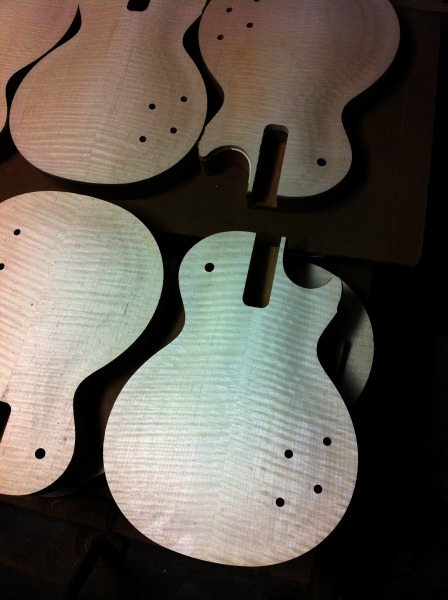Grain Patterns of Birdseye-Maple Wood

Unique Grain Patterns of Birdseye-Maple Wood
We all love unique grain patterns in wood. “Figure” refers to the grain pattern of wood on the longitudinal plane of the tree (vertical direction). Wood with figure displays a unique grain pattern from normal wood of the same species. The figure of wood is, in part, due to its grain and, in part, due to the cut, or to innate properties of the wood. Types of figure include “bear scratches,” bird’s eye, blister, burl, curl, ribbon curl, dimple, fiddleback, flame, wide flame, “ghost”, pin stripe, quilted, spalted, and tiger stripe.
In this blog I want to focus on the unique grain pattern that can be found in sugar maple, which is sometimes called hard maple. There are many species of maple but they all have the same genus: Acer. For sugar maple, I am referring to Acer saccharum. This species is native to the hardwood forests of eastern Canada and the northern parts of the Central and Eastern United States. Sugar maple is best known for its bright fall foliage and for being the primary source of maple syrup. A little known fact is that hard maple has become the most popular choice for wooden baseball bats in major league baseball. For years, the wood species of choice was ash but that has gradually been declining to hard maple. Most of the maple used for baseball bats comes from forests in Pennsylvania and is carefully harvested, milled, and dried. Another fun bit of trivia is that hard maple is widely used for basketball courts throughout North America due to its resistance to splintering, light color, durability, and ease of finishing.
Birdseye figure is due to a pattern of indentations in the growth rings. If the wood is split tangentially {i.e., the plane of the split is essentially parallel to the growth rings), conical projections or elevations are revealed, with corresponding indentations on the matching piece. These projections and indentations extend inward toward the pith, generally beginning in the bark and extending through the wood for an indeterminate number of growth rings.
Birdseye is classified as a “figure related to indented growth rings,” and indeed, close examination of the cross-sectional surface of birdseye reveals that the growth rings do appear to be indented. It is as though a blunt conical instrument were used to cause a localized indentation in the bark, cambium, and wood. These areas contain the same types of cells as found in the surrounding “normal” wood, but the longitudinal cells are not vertically oriented as their counter parts in the normal tissue. Because these projections and indentations generally extend into the bark, standing trees can be easily examined for the presence of birdseye with little physical damage. Several domestic hardwoods have been reported to display birdseye such as ash, walnut, beech, birch. Birdseye is most valuable in sugar maple, although it does occur in other species of maple. Sugar maple with birdseye can be processed into high value veneer and used for caskets, furniture, etc. and milled into lumber for paneling and flooring.
Reference: Bragg, D.C. and D.D. Stokke. 1994. Field identification of birdseye in sugar maple (Acer saccharum Marsh.). USDA Forest Service, North Central Forest Experiment Station. St. Paul, MN. Research Paper NC-317. 20 p.
Meet the Author
Dr. Todd Shupe is the President of Wood Science Consulting, LLC. He is a well-recognized expert on wood forensics, wood preservation, wood decay and degradation, and wood species identification. He has a broad background in new product development, quality management, and marketing and sales in both the public and private sectors. For more information please visit DrToddShupe.com.
We welcome your comments below.
Thank you for visiting. We trust that you have enjoyed reading our articles.
Liked this post? Read more below or search for more topics . . .

